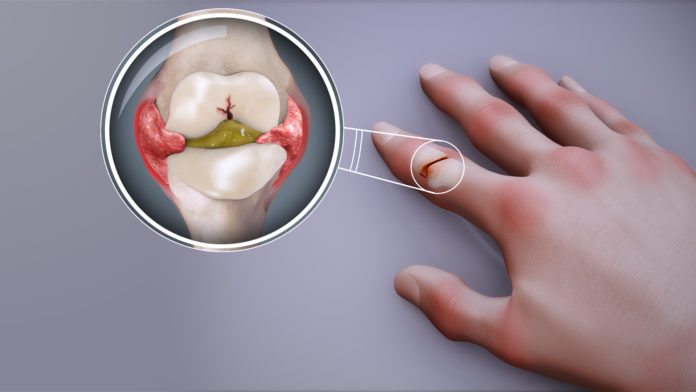Turalio has been approved for tenosynovial giant cell tumour that can cause debilitating symptoms for patients such as pain, stiffness
The U.S. Food and Drug Administration has granted approval to Turalio (pexidartinib) capsules for the treatment of adult patients with symptomatic tenosynovial giant cell tumour (TGCT). The tumour is associated with severe morbidity or functional limitations and not responsive to improvement with surgery.
“TGCT can cause debilitating symptoms for patients such as pain, stiffness and limitation of movement. The tumour can significantly affect a patient’s quality of life and cause severe disability,” said Richard Pazdur, M.D., director of the FDA’s Oncology Center of Excellence and acting director of the Office of Hematology and Oncology Products in the FDA’s Center for Drug Evaluation and Research. “Surgery is the primary treatment option, but some patients are not eligible for surgery, and tumors can recur, even after the procedure. Today’s approval is the first FDA-approved therapy to treat this rare disease.”
TGCT is a rare tumor that affects the synovium (thin layer of tissue that covers the surfaces of the joint spaces) and tendon sheaths (layer of membrane that covers tendons, which are fibrous tissue that connect muscle to bone). The tumor is rarely malignant
TGCT is a rare tumor that affects the synovium (thin layer of tissue that covers the surfaces of the joint spaces) and tendon sheaths (layer of membrane that covers tendons, which are fibrous tissue that connect muscle to bone). The tumour is rarely malignant but causes the synovium and tendon sheaths to thicken and overgrow, causing damage to surrounding tissue.
The approval of Turalio was based on the results of a multi-center international clinical trial of 120 patients, 59 of whom received placebo. The primary efficacy endpoint was the overall response rate (ORR) analyzed after 25 weeks of treatment. The clinical trial demonstrated a statistically significant improvement in ORR in patients who received Turalio, with an ORR of 38%, compared to no responses in patients who received placebo. The complete response rate was 15% and the partial response rate was 23%. A total of 22 out of 23 responders who had been followed for a minimum of six months following the initial response maintained their response for six or more months, and a total of 13 out of 13 responders who had been followed for a minimum of 12 months following the initial response maintained their response for 12 or more months.
The prescribing information for Turalio includes a Boxed Warning to advise health care professionals and patients about the risk of serious and potentially fatal liver injury. Health care professionals should monitor liver tests prior to beginning treatment and at specified intervals during treatment. If liver tests become abnormal, Turalio may need to be withheld, the dose reduced, or permanently discontinued, depending on the severity of the liver injury. Turalio is available only through the Turalio Risk Evaluation and Mitigation Strategy (REMS) Program.
Common side effects for patients taking Turalio were increased lactate dehydrogenase (proteins that helps produce energy in the body), increased aspartate aminotransferase (enzymes that are mostly in the liver but also in muscles), loss of hair color, increased alanine aminotransferase (enzymes that are primarily in the liver and kidney) and increased cholesterol. Additional side effects included neutropenia (low level of white blood cells that help the immune system defend against disease and infection), increased alkaline phosphatase (enzymes that are mostly in the cells of bone and the liver), decreased lymphocytes (white blood cells that help the immune system defend against disease and infection), eye edema (swelling around the eyes), decreased hemoglobin (protein in red blood cells that carry oxygen), rash, dysgeusia (altered sense of taste) and decreased phosphate (electrolytes that help with energy).
The FDA advises health care professionals to tell females of reproductive age and males with a female partner of reproductive potential to use effective contraception during treatment with Turalio. Women who are pregnant or breastfeeding should not take Turalio because it may cause harm to a developing fetus or newborn baby. Turalio must be dispensed with a patient Medication Guide that describes important information about the drug’s uses and risks.
The FDA granted this application Breakthrough Therapy designation and Priority Review designation. Turalio also received Orphan Drug designation, which provides incentives to assist and encourage the development of drugs for rare diseases. The FDA granted the approval of Turalio to Daiichi Sankyo.


